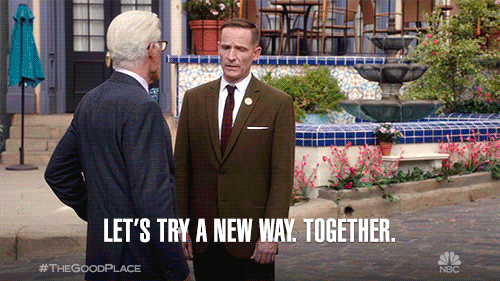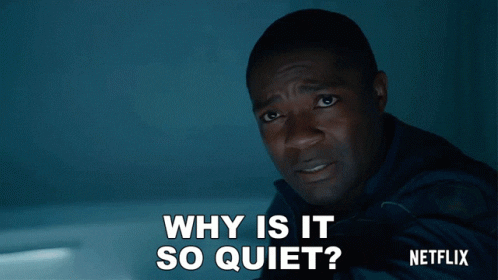Successful managers know that one-on-one meetings are the bedrock of their employee relationships. But if you’ve spent any time in the workplace, you know that all too often, one-on-one meetings:
- Don’t get scheduled in the first place
- Are the first thing to be cancelled when it gets busy
- Are happening, but they’re not even close to being effective
Start with the right mindset for one-on-one meetings
It’s okay to have these issues. However, according to productivity expert Rands, you should be aiming for three outcomes in your one-on-ones:
- Give the smallest voice a chance to be heard
- Understand the overall health of your team
- Open a space to hear what people aren’t saying
That all sounds great, but how? These dos and don’ts will show you exactly how to structure your one-on-one meetings so they support your goal of building a healthy, resilient team. You can also get our free agenda template by clicking below.
Would you like to boost productivity, increase trust and have a healthier, happier team?
Download your FREE 1:1 guide now!
Do: Properly Introduce One-on-Ones
Don’t alarm people by suddenly implementing one-on-ones with no explanation. Let them know that you’re going to start/re-start this practice, why it’s important, and that it applies to everyone (i.e. no one’s being singled out). You might consider publicly committing to a no-cancellation policy. Scary, I know—but effective!
Do: Have a Game Plan for Emotional Outbursts
Employees occasionally blow up in one-on-ones. While this shouldn’t be a regular occurrence, it can actually be a good sign. If they’re venting, that probably means you’re approachable. But when an employee is ranting—repeating the same complaints without any desire to find a solution—you need to nip it in the bud.
Here are some rules of thumb, courtesy of Rands: Vents should be listened to. When they’re done, show empathy and search for solutions together. Rants should be interrupted and redirected. If they go on the attack—blaming you for their problems in an emotionally charged way—that’s a capital-D Disaster. Now it’s not even about the problem. Instead, Rands explains, “You’re experiencing the employee’s emotional baggage regarding the problem.”
If your employee is uncharacteristically upset in a one-on-one meeting, defuse the situation by staying quiet until their emotions pass. (Later, you need to discover why it got to that point!)
Do: Collaborate On the Agenda and Follow-Up Steps

Good meetings are like speeches: they appear effortless, but actually take a lot of forethought. For one-on-ones, I recommend a collaborative agenda that both manager and employee can see and add to—before, during, and after the meeting. At Uptick, we’ve found success with one-on-one agendas that are structured by the manager, and then filled in by the employee ahead of time. This way, everyone’s voice is heard.
Just as important as the meeting is what follows it. Do your employees see you taking notes but not following up on their questions? Do you walk into the next meeting with only a vague recollection of last week’s to-dos? When you’re noticeably scatterbrained or overwhelmed, you send a clear message to employees: “Please don’t add more to my plate.” They’ll have a hard time being open with you—which is why one-on-ones are so valuable in the first place!
Do: Give Clear, Direct Feedback During the Meeting
If you’re hesitant to give critical feedback—whether because of your personality or the office culture—here are some ideas for fitting it into your one-on-one meeting.
Check their self awareness
Consider asking, “What could have gone better this week?” or “What would you have changed about this week?” This is a great way to see how self aware your employee is. If they seem to think there’s no problem, you need to be crystal clear about what’s lacking in their performance. If they’re already aware of the issues, you can help them understand the impact that it’s having on the team and what needs to change.
Lead with your feedback
Try delivering your negative first thing so you don’t have a chance to back out. For example: “Before we get started, I needed to tell you that I have some concerns about your productivity. I noticed there were two deadlines you didn’t meet this week. Sarah ended up staying late on Wednesday because she didn’t have your piece of the project. Of course, it’s not fair to the team if one person isn’t hitting their deadlines. Can you tell me more about what’s going on?”
Adjust the meeting structure
Once you’ve brought up an issue, be sure to ask, “Would it help if we changed up our one-on-one meeting?” Your employee might simply need more accountability, structure, or feedback from their interactions with you. For example, if your employee is having troubling meeting deadlines, you might agree to a standing agenda item that asks, “What didn’t get done this week? What should happen now?”
Don’t: Try to Fill the Silence or Have All the Answers

In a previous role, I ran 50 to 100 employee one-on-one meetings each year. Per company policy, I recorded the audio of these meetings so I could take more accurate notes. When I first played back the recordings, I couldn’t believe it. I was interrupting people, couldn’t let silence fill the air, and was talking almost as much as my interviewees.
Since then, my policy is simple: I talk about 20% of the time, and my employees talk 80%. I get better insights this way, and my team members feel heard. It’s not that your thoughts as a manager aren’t important; they are. But employees hear from their manager all week long. There’s no point to this one-on-one meeting if it’s more of the same.
Getting insights from your team is priceless. Here’s how you can cultivate an environment where those insights are safe to share:
- Build thoughtful agenda items and questions, customized to each person.
- Listen to their responses. Put away your laptop and other devices if you can.
- If you don’t have an answer, look for it after the meeting. Assure them that you’ll get back to them soon (and then follow up).
- Prompt them to give you deeper insights with a questioning method called laddering.
Don’t: Treat Your One-on-One Meeting Like a Status Uptdate
You have other ways to discover the status of a project. So don’t ask for—or accept—line-by-line reporting on projects that are being handled in other meetings. Instead, your one-on-one should be high level. You should be talking about goals, priorities, plans for the future, and those little nagging concerns that every employee has. Try to exude patience and curiosity. If you walk into each meeting with an open mind, excited to learn about (and from!) your employee, you’ll find that the meeting doesn’t feel like a chore.
Don’t: Over- or Under-Structure Your Meeting
Don’t listen to people who say you don’t need an agenda—you absolutely do. And don’t try to squeeze the meeting into a quick hallway discussion or after-dinner drinks—that sends the message that it’s not a serious discussion.
It’s best to have a recurring time and place for these meetings, with an agenda that’s accessible to both you and your employee. This might be the most important meeting of their week, and if you frequently shift or cancel it, they’ll start treating it just as casually.
On the other hand, don’t be rigid. If your employee is having a terrible day, you might want to skip a few items on the agenda to hear what’s on their mind. Get comfortable with off-the-cuff changes and additions if they’ll strengthen your relationship.
Don’t: Forget to Celebrate

It’s great to be achievement oriented, but employees will burn out fast if you don’t make time to celebrate their wins. Similarly, if your employee is more comfortable talking about their next project instead of the great job they just did, you may need to force them to slow down and notice their successes:
- Try adding a standing item to your one-on-one agenda that prompts reflection and celebration, like “What achievements are you most proud of?” or “How did you make a positive impact on the team?”
- Be sure to prepare some positive thoughts of your own, just in case your employee is drawing a blank.
- Don’t let the celebrating end in your one-on-one. Ask your employee how they’d like to be recognized, whether that’s publicly or privately, and follow through. This could be as simple as a gift card to their favorite lunch spot or a shoutout in the team meeting. (Here are a few more ideas for recognizing your high performers.)
Free 1:1 Meeting Agenda Template
Download our pick for the best one-on-one meeting agenda template.


